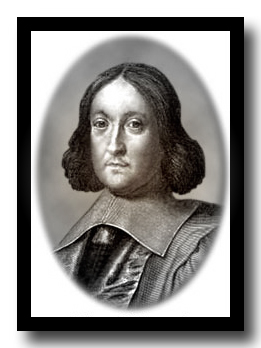Amicable Numbers
home | courses | topics | theorems | starters | worksheets | timeline | KS3 | KS4 | KS5
An amicable or friendly number is the one which has a friendly pair. Friendly pairs are such numbers which have the divisors adding up to the other number: for example, take 220 and 284. Proper divisors of 220 are 1, 2, 4, 5, 10, 11, 20, 22, 44, 55, and 110. They add up to 284. Proper divisors of 284 are 1, 2, 4, 71, and 142. They add up to 220. Hence, 220 and 284 are friendly!
Ancient philosophers/mathematicians used friendly numbers to describe friendships between people (Aristotle in his work Ethics, for example). And the pair of friendly numbers (also sometimes called amicable) 220 and 284 became a symbol for friendship.
An Arabic mathematician, Thabit ibn Qurra Ibrahim, who lived in Baghdad in the 9 th century, came across an algorithm by which he was able to find more amicable pairs. The algorithm works in the following way:
- write the powers of 2 to the power of n in the first row, starting with n=1
- write the triple of the numbers of the first row in the second row
2 |
4 |
8 |
16 |
32 |
6 |
12 |
24 |
48 |
96 |
- add another row - in it write the number from the second row minus 1, like this
2 |
4 |
8 |
16 |
32 |
6 |
12 |
24 |
48 |
96 |
5 |
11 |
23 |
47 |
95 |
- add yet another row and write the product of the numbers in the second row of the column you are in and the left neighbour of this number
2 |
4 |
8 |
16 |
32 |
6 |
12 |
24 |
48 |
96 |
5 |
11 |
23 |
47 |
95 |
12x6-1= 71 |
24x12-1= 287 |
48x24-1= 1151 |
96x48-1= 4607 |
All you now need is to look and try to find primes which are neighbouring numbers in the third row and have a corresponding prime in the column above the greater one from the third row in the fourth row. The final number you need is number in the top row, exactly above the prime in the fourth. Write them all down (you should have four such numbers). For our table above, these would be:
5 and 11 are neighbouring and primes
corresponding to them is 71
corresponding to 71 is 4.
You can now 'make' the smallest pair of friendly numbers:
4 x 5 x 11 = 220 and 4 x 71 = 284
Remember that the numbers which you take from your table can be described as
|
x |
|
|
|
|
|
|
|
|
y |
z |
|
|
|
|
p |
|
|
|
And that your friendly pair will be the product of them in such a way that
A = x * y * z and B = x * p
Pierre de Fermat and Marin Mersenne discovered, in 1636, the amicable pair
17296 = 16*23*47 and 18416 = 16*1151
and Rene Descartes found the third pair
9363584 = 128*191*383 and 9437056 = 128*73727.
Can you think of the way to describe Thabit ibn Qurra's rule in algebraic terms? If yes, then try it yourself before proceeding with reading the text below.
Thabit ibn Qurra's rule can be expressed as follows. Starting from n =1, there are some primes who can be expressed as

If they are all primes, then the pair
![]()
is an amicable pair.
In 1747 Euler, as usual, went into overdrive and produced more amicable pairs than anyone had done before him. He published a paper "On the amicable numbers" (De numeris amicabilius) adding 30 more pairs; and then three years he had extended the list to 60 amicable pairs. 16-year old Nicolo Paganini found, in 1866, another amicable pair which was missed by the great mathematicians before him: 1184 and 1210.
Amicable numbers are opposite to solitary numbers. Whether a number is solitary or not is an interesting question - whether 10 is a solitary number is one of the most famous unsolved questions in mathematics!
Learn more about some unsolved and solved problems in mathematics.
Fermat found the pair
(17296, 18416)
in 1636.
Descartes found the pair
(9363584, 9437056)
in 1638.
These were in fact rediscoveries of pairs of amicable numbers known to Arab mathematicians centuries before. See the page on Arabic achievements in mathematics and the timeline to find out more.
artefacts | numerals | concepts | people | places | pythagoreans | egyptians | babylonians
_____________________________________________________________________________________________________________________
Acknowledgements | Copyright | Contact | Mission Statement | Tell a friend about this site

